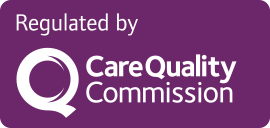Stool Microbiology Test
What are Stools?
A stool, also known as faeces or poo, is the semi-solid waste matter that remains after food has been digested and the nutrients absorbed in the intestinal tract (gut). Stools are passed in a bowel movement through the anus (back passage). It contains 75% water and 25% solid matter, including bacteria, indigested food matter (fibre from plants and fats), proteins, bile (aids digestion of fats) and bile pigment (bilirubin), inorganic compounds, and cells from the gut lining. However, stools vary in composition, appearance and smell according to your diet, digestion, and general health. It is also important to realise that normally many types and numbers of "good" bacteria live in your intestines, where they help with food digestion, make vitamins, and assist the immune system in protecting against harmful bacteria.
What is a Stool Microbiology Test?
Stool microbiology tests for bacteria and parasites in your stools. Bacteria that this test focuses on Campylobacter, Salmonella, Shigella, and Escherichia coli (VTEC). Escherichia coli (VTEC) is a Shiga toxin-producing E. coli (also referred to as Verocytotoxin-producing Escherichia coli). Parasites (including their eggs and larval cysts) that this test focuses on Cryptosporidium and Giardia.
The tests are processed in the microbiology laboratory using a polymerase chain reaction (PCR). This is a highly sensitive and rapid molecular technique used to copy fragments of DNA from specific bacteria into millions of copies. PCR relies on knowing sequences of specific bacterial DNA and using them to design primers that combine specifically to the bacterial sequences. PCR tests mean that patients can identified and treated promptly.
Samples that are PRC positive for bacteria are then cultured to provide sensitivities and, if necessary (such as when highly contagious), referred to Public Health England. A sensitivity analysis (sometimes called susceptibility testing) is used to determine the antibiotic treatments that are and are not effective in killing the bacteria. It evaluates the sensitivity of bacteria to a specific antibiotic by determining the antibiotic's ability to kill the bacteria. The stool sample is cultured in a petri dish containing a growth medium, and placed in an incubator for a day or two, until the bacteria in the stools have multiplied and grown into visible colonies. The colonies are then treated with different antibiotics. According to their response to the antibiotics, treated colonies are rated as:
- Susceptible: no colony growth.
- Intermediate: limited colony growth.
- Resistant: colony growth.
Why is a Stool Microbiology Test important?
Infections caused by the bacteria Campylobacter, Salmonella, Shigella, and Escherichia coli (VTEC), and parasites Cryptosporidium and Giardia show similar symptoms, thus requiring tests to determine the organism causing the infection. Symptoms usually start within a week after infection and last 1-2 weeks, sometimes longer, particularly in people with weakened immune systems. Some people with parasitic infections have no symptoms.
Generally, symptoms include diarrhoea (can be bloody in bacterial infections, and is watery in parasitic infections), stomach cramps/pain, and fever. Additionally, parasitic infections cause nausea, vomiting, dehydration, and weight loss. Symptoms vary in severity. Infections can be serious, long-lasting, and life threatening, especially in cases with a weakened immune system. Infections may spread outside of the intestinal tract to other areas of the body, such as blood, bones, joints, or the nervous system (spinal fluid and brain), causing complications such as blood, arthritic, neurological, and post-infection disorders.
Who should have a Stool Microbiology test?
Stool microbiology may be requested if you have signs and symptoms of an infection in your intestinal tract, such as diarrhoea, stomach cramps/pain or vomiting, that has lasted for several days. Also, you may be tested if you have recently travelled abroad, or drunk water from a stream or lake, or had contact with someone who has any of these bacterial or parasitic infections.
How to take a stool sample for Microbiology testing?
The stool sample is self-collected at any time of the day or night. You will therefore be given detailed instructions on how to collect the sample, and a sample collection pack of the items needed for collection.
Before collection, complete the sample labels and label the brown-lid collection tube. To collect your stool, place toilet paper in the bowl and poo onto it. Try not to let the stool touch the toilet water. Then, wash your hands. Using the sampling stick attached to the lid of the collection tube, scrape the stick over the stool until it is evenly covered. Place the sampling stick back into the collection tube, and close. Wash your hands again before placing the collection tube into the outer sample container containing the absorbent material and close. Finally, put the sample container along with the completed request form into the test-kit box, and the test kit box into the prepaid blue postal envelope, and post immediately. The stool sample must be tested as soon as possible, as some bacteria may not survive the changes that occur in stools over time.
Results take 2 - 3 days from the time the sample is booked in at the lab.
What do Microbiology and Culture Test results indicate?
The PCR result will determine if you have or do not a bacterial infection caused by Campylobacter, Salmonella, Shigella, or Escherichia coli (VTEC), or parasitic infection caused by Cryptosporidium or Giardia. A positive PCR result means that you have one of these bacterial or parasitic infections.
When the PCR is positive, the following stool culture results provide guidance as to how the bacterial infection should be treated. The antibiotic-treated colonies of bacteria indicated whether they were susceptible, intermediate or resistant to the antibiotic, whereby:
- Susceptible means the antibiotic is effective in treating the infection.
- Intermediate means an increased dose of antibiotic is required to treat the infection.
- Resistant means the antibiotic does not treat the infection. Another or several antibiotics are needed to treat the infection.
Your doctor can use this information to select your antibiotic treatment for the infection.
A negative PCR test means that none of these organisms are present and your symptoms are caused by something else.
What are the risk factors for a bacterial or parasitic infection?
There are many possible sources of infection, which develop after the bacteria or parasites have been swallowed. Risk factors for a bacterial or parasitic infection include poor hygiene; international travel to countries and areas with poor hygiene and sanitation; contaminated water (untreated or poorly-treated water sources, water for drinking/ice, or in a stream/river/pond/lake/well or swimming pool); contaminated food (raw, under-cooked or prepared by infected people); contaminated surfaces; caring for an infected person or touching an infected animal; and getting micro-amounts of stools from yourself, another person or an animal your mouth.
How to avoid a bacterial or parasitic infection
Bacteria and parasites live in the intestines of people and animals, and are passed in stools; transmission occurs when they are swallowed by other people and animals. The only way to protect yourself and others is not to swallow these organisms. Protection can be achieved by practicing good hygiene by washing hands with soap after using the toilet or after sex, and around food, people, and animals; in areas where there are untreated or poorly-treated water sources or other means of contamination, drinking clean water by using bottled, boiled or filtered water, wash fruit and vegetables in uncontaminated water, cook all foods and cook them thoroughly, and drink pasteurised milk; disinfecting surfaces and wear gloves after caring for infected people and pets; and avoiding contact with stools during sex by using a condom or do not have sex with an infected person.
GMC registration number: 4524038

Date: 27 March 2025
Next review: 26 March 2027
All UK registered doctors can have their registration checked on
The Medical Register at the GMC website.
Stool Microbiology Reviews By Our Patients
-
Very fast and efficient service. Got result in 2 days.
-
Test arrived quickly and was easy to collect and post. Thorough instructions were included with the kit. The online platform for accessing your results is great. The only thing I would add is that it was a bit confusing as to where to write the time and date of sample collection, or whether to write it at all.
Related Pages
- All Diagnostic Tests»
- Blood Lipids Profile»
- Calprotectin Test»
- Coeliac Disease Test»
- COVID-19 Tests»
- Diabetes Test»
- Ferritin Test»
- Follicle Stimulating Hormone Test»
- Free Testosterone Test»
- H. pylori Test»
- Iron including Total Iron-Binding Capacity Test»
- Iron Status Profile»
- Liver Function Test»
- Liver Function and Kidney Function Test»
- Quantitative Faecal Immunochemical Test»
- SHBG Test»
- Thyroid Function Tests»
- Total Testosterone Test»
- Urine Chemistry Test»
- Vitamin B9 Test»
- Vitamin B12 Test»
- Vitamin D Test»
- Well Man Screen»
- Well Person Check Up»







